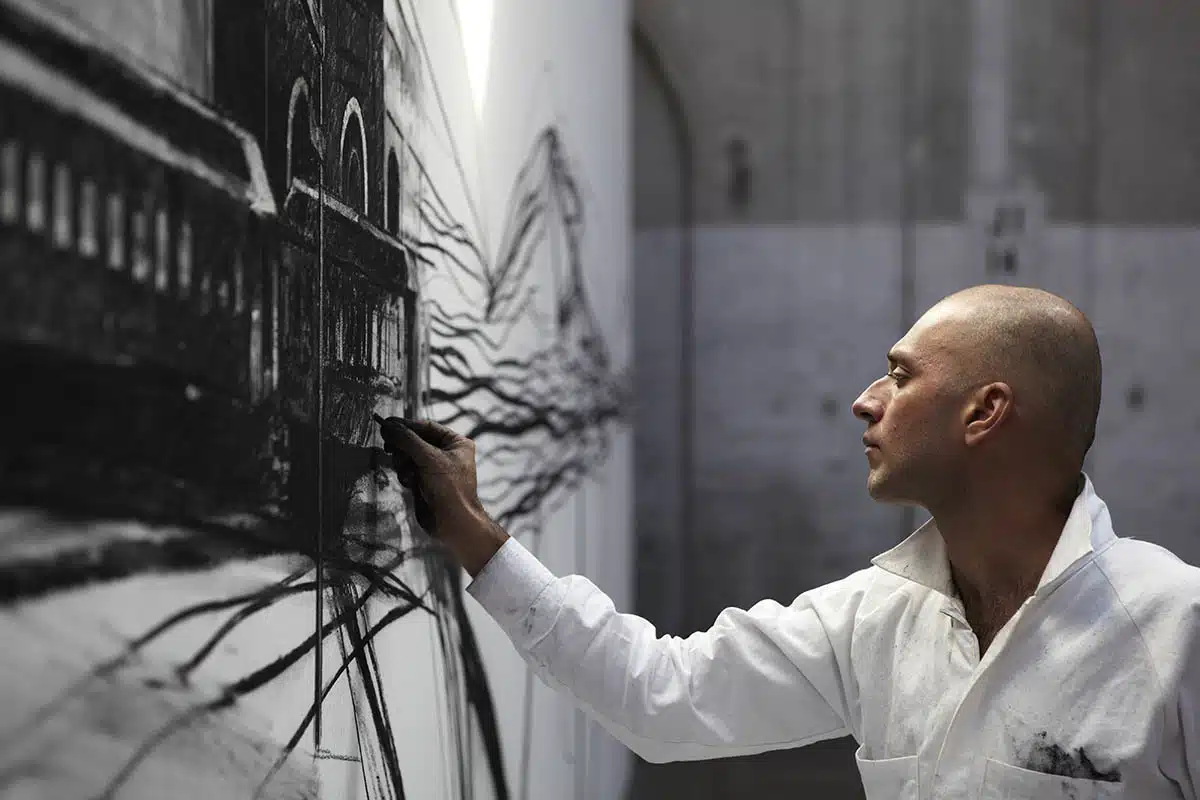Sometimes considered only a preparatory step toward a final work of art, drawing is one of the most ancient mediums in the world, powerful because of its simplicity. With just a pencil or pen, an artist can draw out whole worlds and conjure up complex emotions — on any surface imaginable. From humorous, ironic doodles that make us laugh out loud, to moving portraits of struggle and solidarity, here we list eight South Asian artists who show us exactly how powerful drawings can be. Read on to discover what makes these artists special, and be inspired to take up the pen yourself!
1. Nikhil Chopra (1974–)
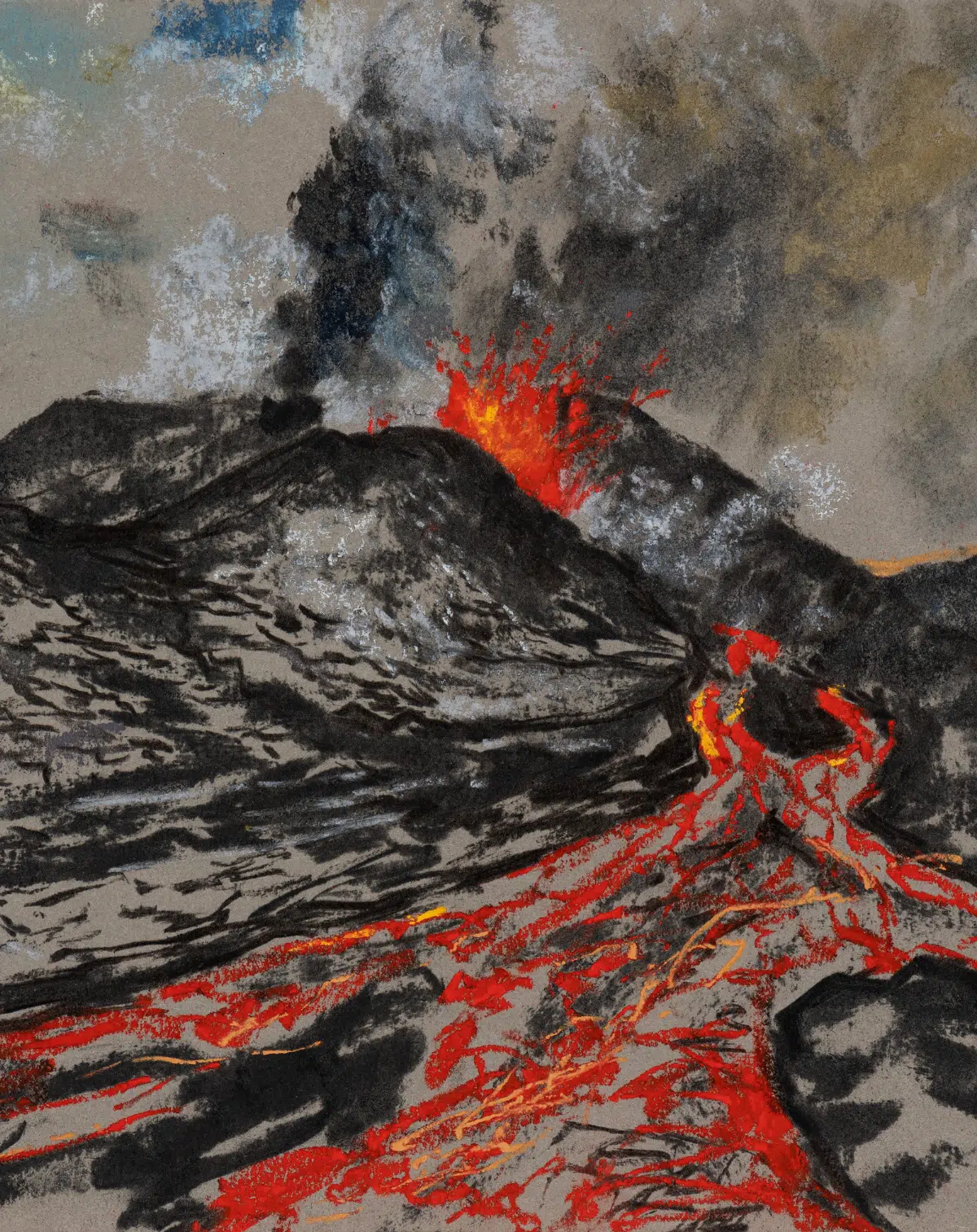 Nikhil Chopra. Untitled, 2021. Mixed media on paper. Courtesy the artist and Chatterjee & Lal
Nikhil Chopra. Untitled, 2021. Mixed media on paper. Courtesy the artist and Chatterjee & Lal
Born in Kolkata, multi-disciplinary artist Nikhil Chopra lives and works in Goa. Taking a performative approach to drawing, Chopra creates drawings in front of live audiences, sometimes over several days, playing the role of various characters—his most iconic personas being Sir Raja, based on the character of a westernised Indian prince, and Yog Raj Chitrakar, loosely based on his own grandfather, a draughtsman. For the artist, “the labour is also the work,” and the performance matters as much as the final drawing. Playful yet political, Chopra’s performance drawings address questions of identity, body and colonial history, all at once. In Lands, Waters, and Skies (2019), for example, the artist spent multiple nights at The Metropolitan Museum of Art in New York, while being followed by security cameras and viewers, calling attention to hidden systems of colonial control. In another performance-drawing Rouge (2019) at the Tate Modern in London, Chopra drew a massive landscape on the gallery’s wall with red lipstick—evoking at once the pageantry of theatrical makeup, the casual act of touching-up one’s appearance before getting a picture taken, and the bloodshed of colonial rule.
2. Gagan Singh (1975–)
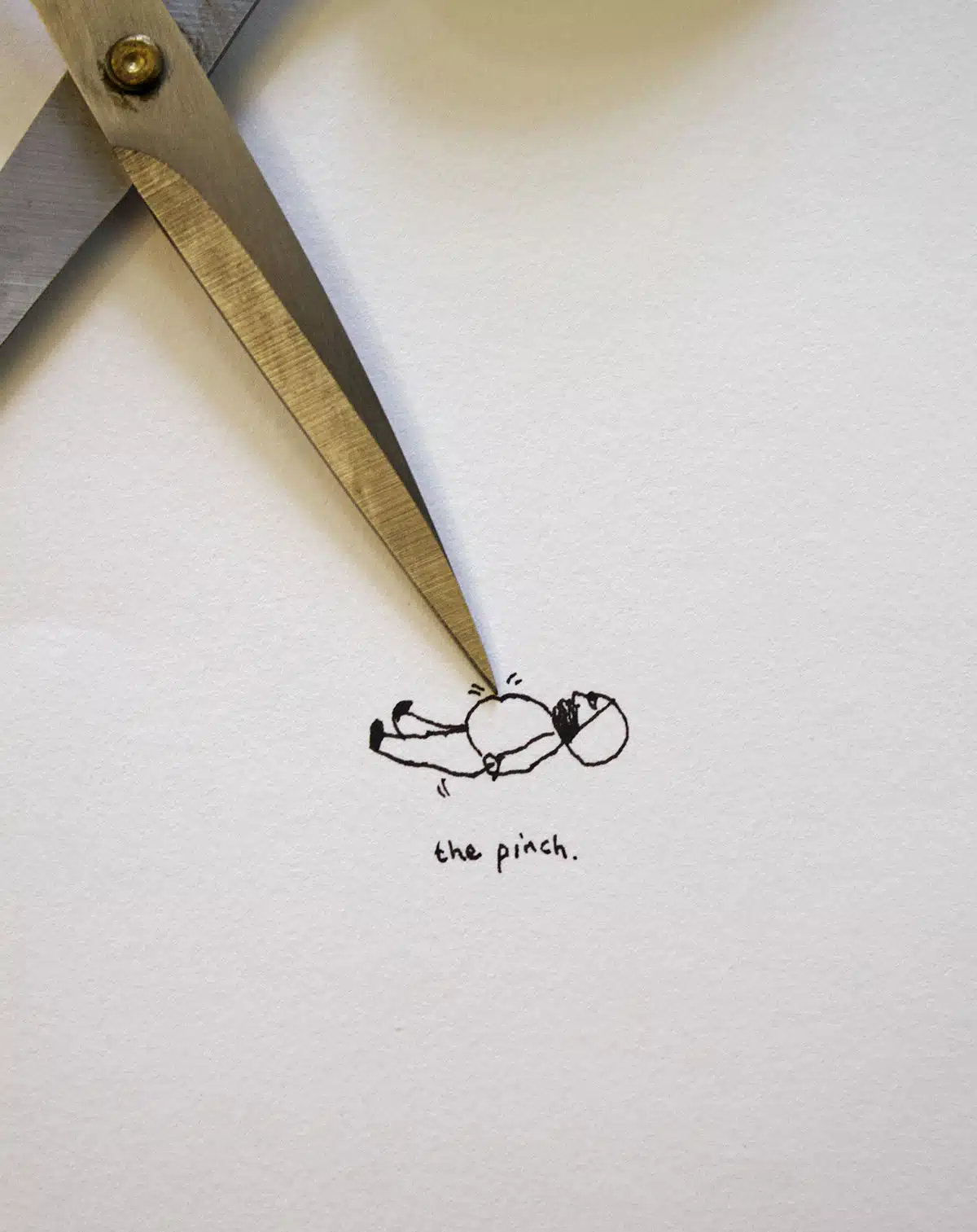 Gagan Singh. The Pinch, 2020. Unique digital photograph. Courtesy of Chatterjee and Lal
Gagan Singh. The Pinch, 2020. Unique digital photograph. Courtesy of Chatterjee and Lal
“I think the world is really boring… and there’s something in my head that makes it really funny,” says Delhi-based artist Gagan Singh. With witty and minimal drawings, Singh gives us an insight into the inner workings of his brilliant mind in which the most serious philosophical questions take the form of jokes. Singh’s drawings, often featuring just a single doodle-like figure of a man resembling himself, play out absurd thought-experiments in which a basic Maruti 800 car may become a transformer robot or a man may dive into the shadow of a glass of water placed on the paper. Alongside the figures, Singh scratches in phrases and sentences that play on words and add to the wit of the drawings. Not just on paper, Singh draws and writes everywhere he goes— “tattooing” walls and tables with his drawings—be it at his favourite Cafe Coffee Day in South Delhi or on the walls of major art events.
3. Saba Qizilbash (1977–)
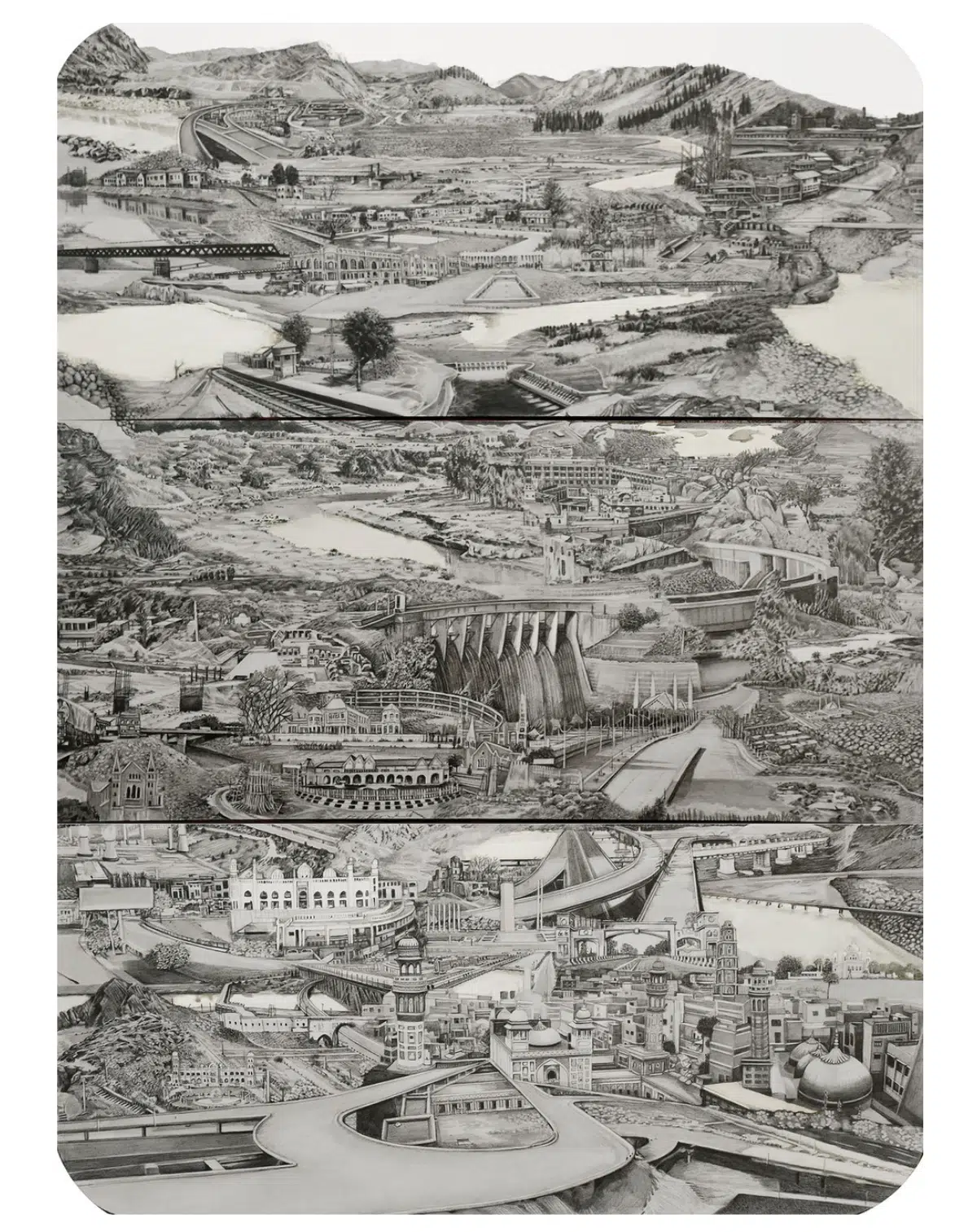 Saba Qizilbash. GT Rd II, Torkham to Lahore, 2020. Graphite on Paper. Courtesy of the artist
Saba Qizilbash. GT Rd II, Torkham to Lahore, 2020. Graphite on Paper. Courtesy of the artist
Lahore-born and Dubai-based Saba Qizilbash is known for her haunting drawings of vast, abandoned landscapes. Rendered in meticulous detail, Qizilbash depicts landscapes that are both in ruin and in the process of being built up. Her drawings are full of roads, railway tracks, rivers and bridges, alluding to themes of change, transformation and displacement, besides the artist’s own childhood experiences of crossing the borders between India and Pakistan with her family. “I walk difficult landscapes, imagining open access, open topographies, in search of new possibilities,” she says about her work. Besides landscape, the artist is also a lover of historical objects, which often appear in her drawings, be it Tipu Sultan’s mechanical toy in the form of a tiger or 17th century bejewelled Mughal spectacles.
4. Vishwa Shroff (1980–)
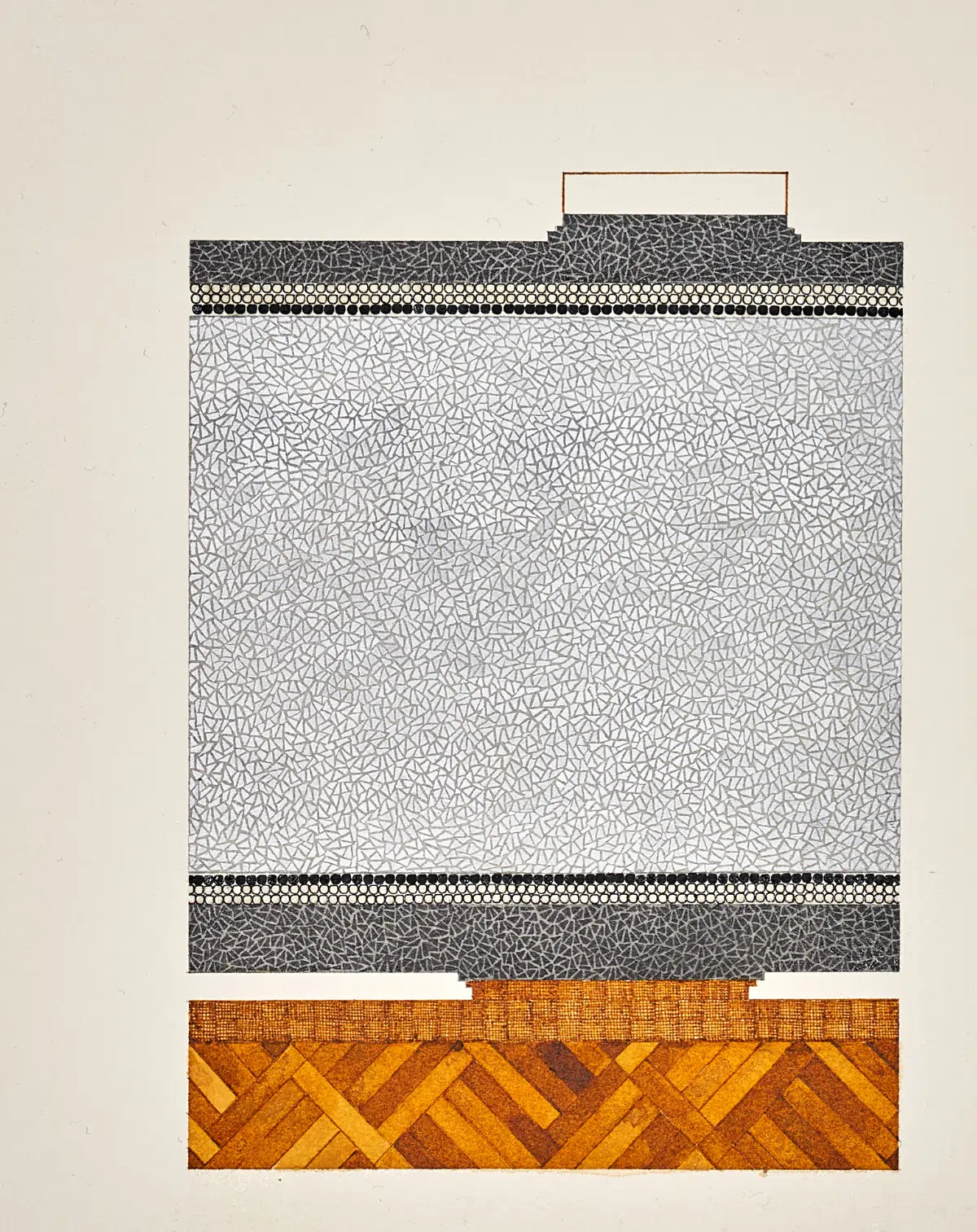 Vishwa Shroff. Memoria Manet 5, 2022. Watercolour and Ink on Paper. Courtesy of TARQ
Vishwa Shroff. Memoria Manet 5, 2022. Watercolour and Ink on Paper. Courtesy of TARQ
The line drawings of Mumbai-based artist Vishwa Shroff shine a light on the forgotten nooks and crannies of city buildings and the stories they hold. Made in precise ink lines, watercolour washes and digital print, her architectural drawings record the multi-faceted histories and secrets held by the structures we take for granted—be it a stairwell in an old Mumbai house or the flooring of a public building in London. The drawings are not exact copies of the real spaces they reference, but are made in Shroff’s distinctive “topsy-turvy” style that reflects her love for geometry, pattern and optical illusion. She also regularly experiments in scale and form in her drawings, clear in works such as her Corridor Series, featuring the titular corridors drawn to life-size, and Everyday Rossana, a small and intimate flipbook in which she draws people as simple ink dots within building floor-plans—a work that represents the artist’s core interests in its most concentrated form.
5. Roshan Chhabria (1983–)
 Roshan Chabbria. Masala Dosa in Kochi, 2017. Pencil on Paper. Courtesy of Art Alive Gallery
Roshan Chabbria. Masala Dosa in Kochi, 2017. Pencil on Paper. Courtesy of Art Alive Gallery
“I find the day-to-day mundane life of the Indian middle-class to be very specific [and] interesting,” says the Baroda-based artist Roshan Chhabria. Chabbria’s drawings are full of dark humour and social parody, inspired by his upbringing in a conservative middle-class Sindhi family and Pop and Dada art movements. He uses a combination of colour pencil and watercolour in his work, bringing together images and text from local magazines, billboards and educational posters, with an intentionally naive “cheeky” flair. Among his many go-to ‘middle-class Indian’ tropes, the ‘ideal boy’ is one of the most notable, a figure through which he creates a poignant and ironic “personal scrapbook” of the societal expectations young men like himself confront growing up in the world today.
6. Karan Shrestha (1985–)
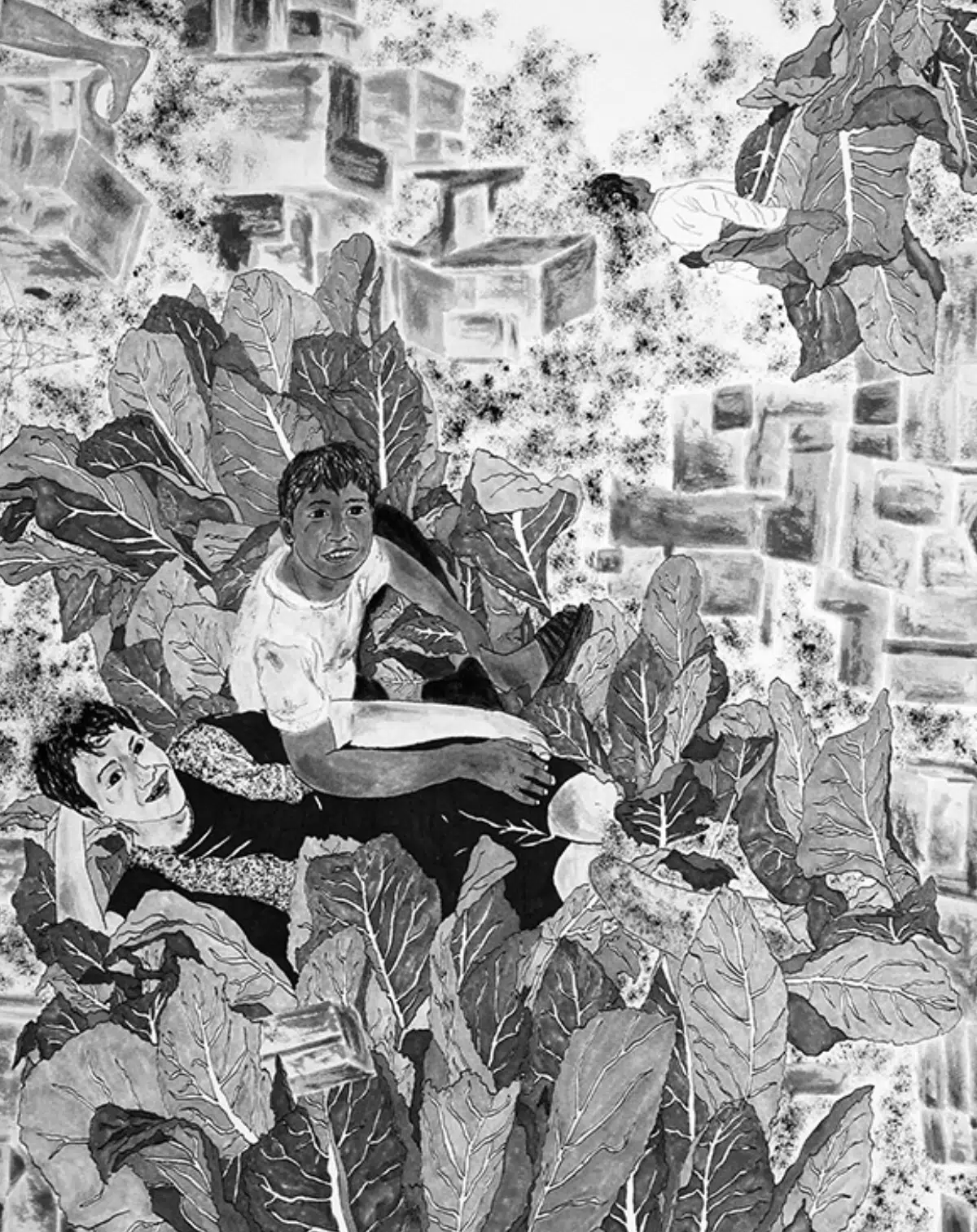 Karan Shrestha. Untitled, 2021. Ink on archival cotton rag paper. Courtesy of Shrine Empire
Karan Shrestha. Untitled, 2021. Ink on archival cotton rag paper. Courtesy of Shrine Empire
“Drawing is like breathing for me,” says artist Karan Shrestha, who works in many mediums including drawing, photography and video. Working between Kathmandu and Mumbai, Shrestha’s drawings are typically made with ink on cotton rag paper and feature dense compositions of humans in nature. Far from showing a romantic vision of a harmonious relationship between humans and nature, Shrestha highlights the difficulties and complexities in achieving ecological balance in today’s world. In works, such as his Stealing Earth series, Shrestha sheds light on the displacement of indigenous communities in the name of wildlife conservation policies in Nepal. Combining art and activism, he challenges us to think deeper about accepted practices of environmental conservation and raises questions about the rhetoric of natural beauty, claiming “beauty, driven by ideas of purity, ruins us and harms all that is true.” In his drawings, nature takes richly detailed, nuanced and complicated form, reflecting his deep respect for both his subject matter and the act of drawing itself.
7. Faiza Hasan (1989–)
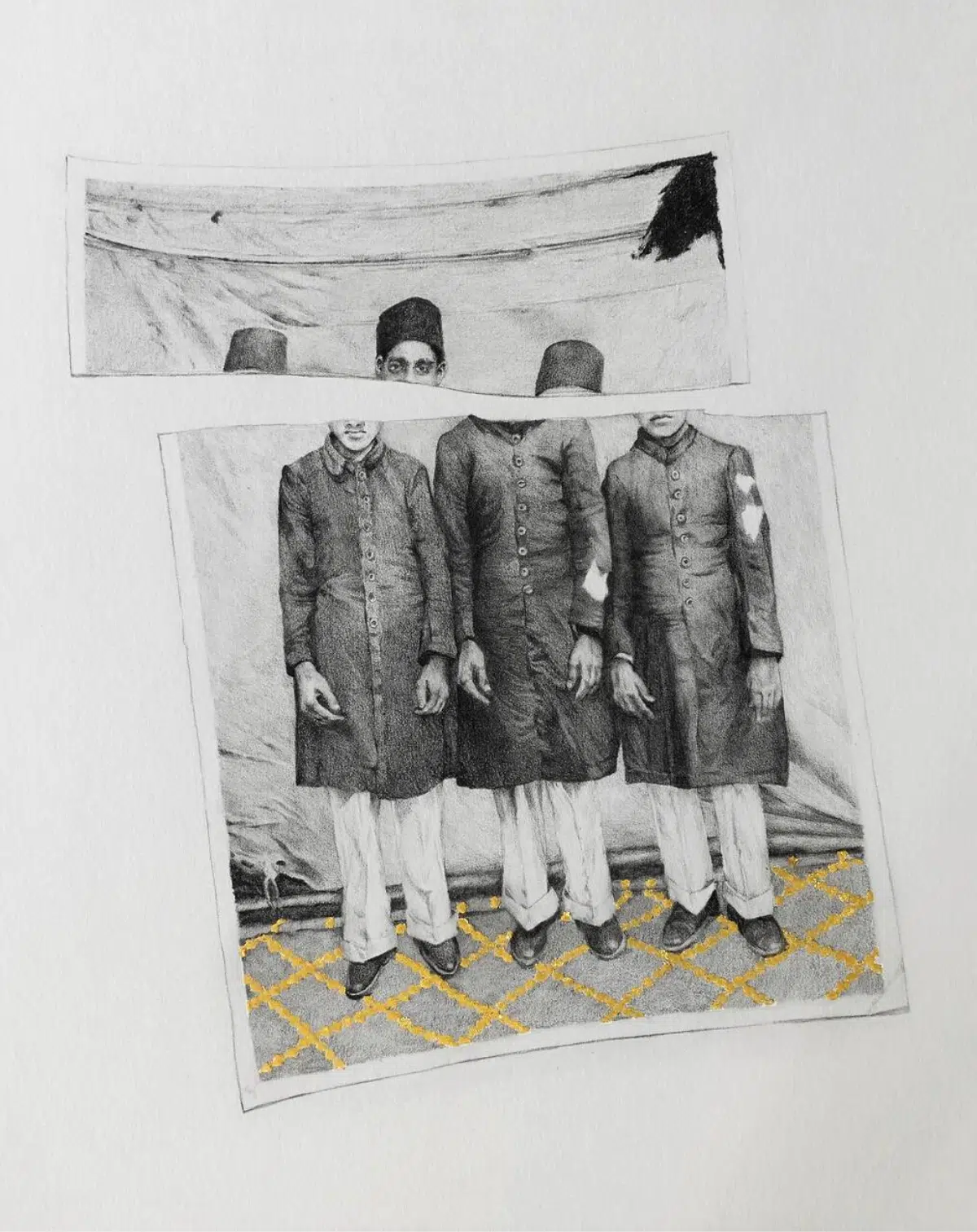 Faiza Hasan. 27 February, 2020 – Kaagaz, 2021. Charcoal and gold leaf on paper. Courtesy of GALLERYSKE
Faiza Hasan. 27 February, 2020 – Kaagaz, 2021. Charcoal and gold leaf on paper. Courtesy of GALLERYSKE
Working in Hyderabad, artist Faiza Hasan is known for tender drawings exploring themes ranging from home and belonging to love and grief. Interested in the relationships between everyday objects, such as family photographs, and major socio-political events, Hasan is a chronicler of the big stories of everyday people.
To this end, she creates detailed charcoal portraits of people and objects with personal significance, often against large white backgrounds and sometimes with highlights of gold or embroidered details—meditations on both the fragility and importance of memory. Amongst her many achievements, Hasan was the winner of the first ever India Art Fair and BMW India led ‘The Future is Born of Art’ Commission in 2022 for which she designed a car wrap titled ‘Suno’ meaning ‘to listen’, depicting and honouring people from her life and community.
8. Jasmine Nilani Joseph (1990–)
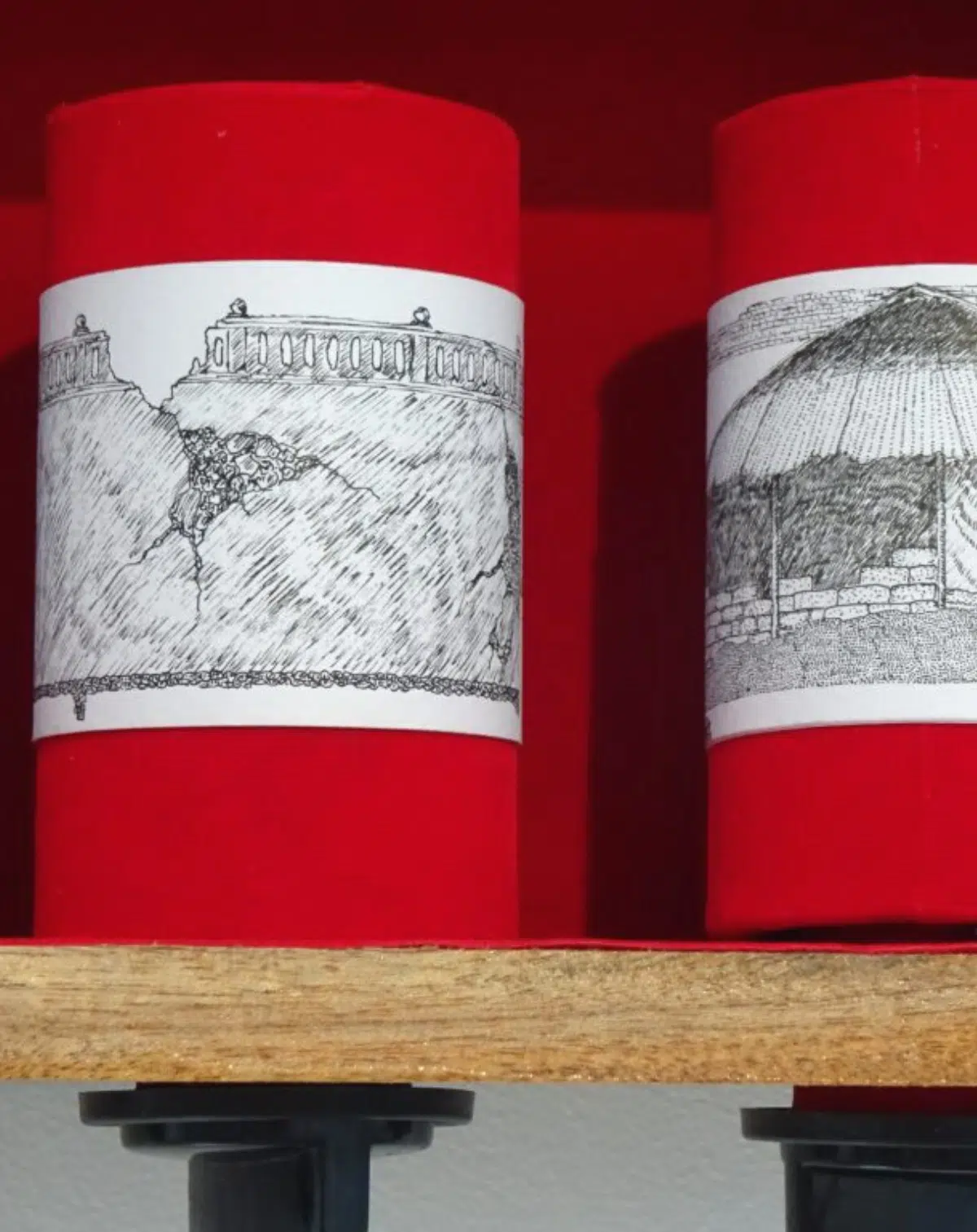 Jasmine Nilani Joseph. Yaal Jewellery Box, 2019. Ink on Paper. Courtesy of World Art and Memory Museum
Jasmine Nilani Joseph. Yaal Jewellery Box, 2019. Ink on Paper. Courtesy of World Art and Memory Museum
‘The personal grows alongside … history,” says artist Jasmine Nilani Joseph. Born in Jaffna, Sri Lanka, the artist has moved and been displaced many times in her life, moving from city to city due to the crisis of the Sri Lankan Civil War. Joseph’s drawings, in which fences, barbed wire and walls are the central motifs, are testament to this personal and national history, scarred and divided by war. She uses the “personal as a tool” in calling attention to the vulnerability of many others, such as in the series Mobile Studios, in which she draws the various spaces she’s maintained as temporary studios over the years in delicate ink diptychs. Joseph has also experimented with digital animation, adding dynamism to the lines of division in her work, as well as with alternative mediums such as bangle containers.


